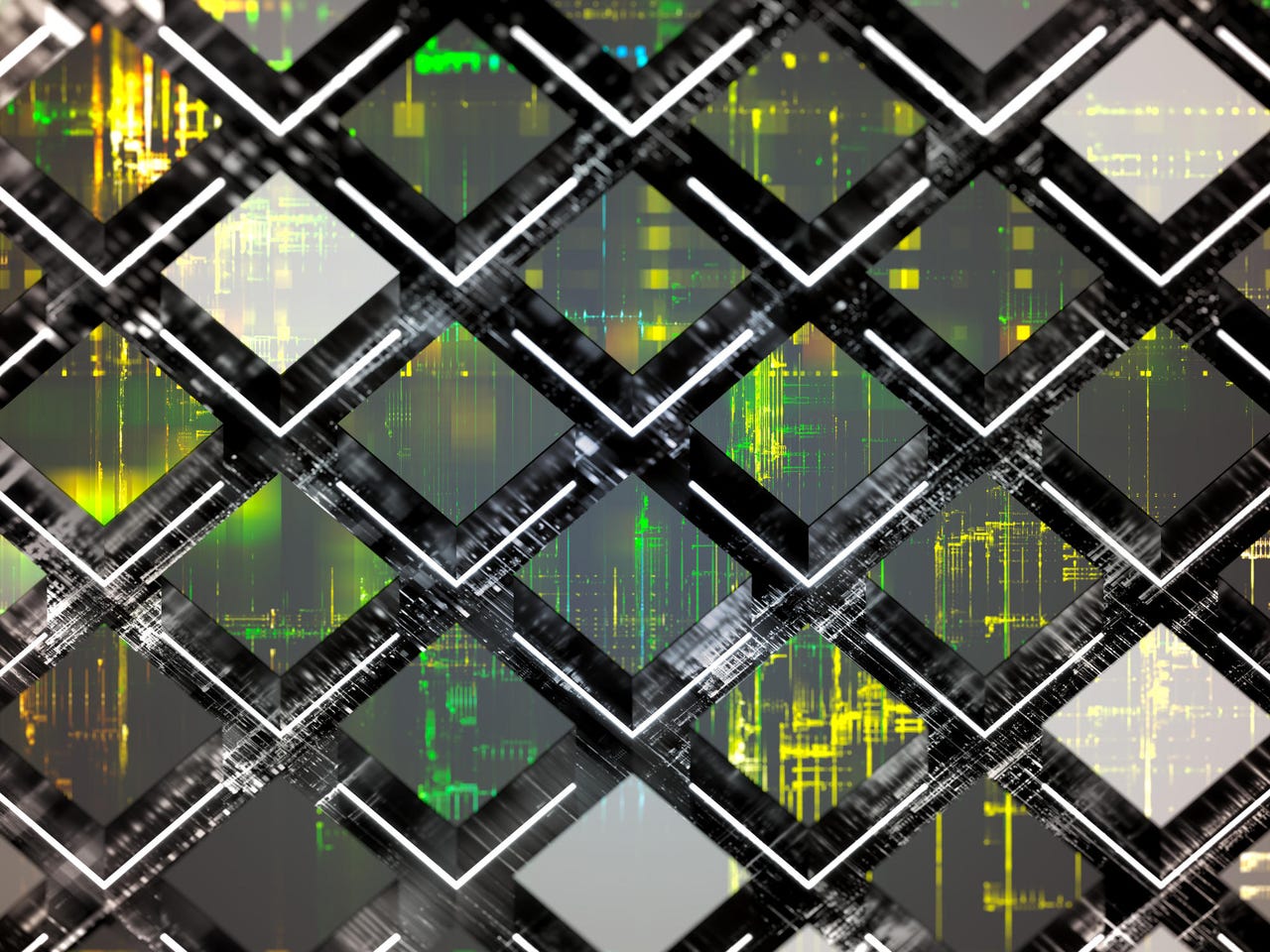AWS reveals a new method to build a more accurate quantum computer


The cloud company published a new blueprint for a fault-tolerant quantum computer that describes a new way of controlling qubits to make sure that they carry out calculations as accurately as possible.
Amazon's cloud subsidiary AWS has released its first research paper detailing a new architecture for a future quantum computer, which, if realized, could set a new standard for error correction.
The cloud company published a new blueprint for a fault-tolerant quantum computer that, although still purely theoretical, describes a new way of controlling quantum bits (or qubits) to ensure that they carry out calculations as accurately as possible.
The paper is likely to grab the attention of many experts who are working to improve quantum error correction (QEC), a field that's growing in parallel with quantum computing that seeks to resolve one of the key barriers standing in the way of realising useful, large-scale quantum computers.
Quantum Computing
Quantum systems, which are expected to generate breakthroughs in industries ranging from finance to drug discovery thanks to exponentially greater compute capabilities, are effectively still riddled with imperfections, or errors, that can spoil the results of calculations.
SEE: Hiring Kit: Computer Hardware Engineer (TechRepublic Premium)
The building blocks of quantum computers, qubits, exist in a special, quantum state: instead of representing either a one or a zero, like the bits found in classical devices, quantum bits can exist in both states at the same time. While this enables a quantum computer to carry out many calculations at once, qubits are also highly unstable, and at risk of collapsing from their quantum state as soon as they are exposed to the outside environment. Consequently, the calculations performed by qubits in quantum gates cannot always be relied upon -- and scientists are now exploring ways to discover when a qubit has made an error, and to correct the mistake.
"The quantum algorithms that are known to be useful -- those that are likely to have an overwhelming advantage over classical algorithms -- may require millions or billions of quantum gates. Unfortunately, quantum gates, the building blocks of quantum algorithms, are prone to errors," said AWS Center for Quantum Computing research scientists Patricio Arrangoiz-Arriola and Earl Campbell in a blog post.
"These error rates have decreased over time, but are still many orders of magnitude larger than what is needed to run high-fidelity algorithms. To reduce error rates further, researchers need to supplement approaches that lower gate error rates at the physical level with other methods such as QEC."
There are different ways to carry out quantum error correction. The conventional approach, known as active QEC, uses many imperfect qubits (called 'physical qubits') to correct one qubit that has been identified as faulty, to restore the particle to a state of precision. The controllable qubit created in this way is called a 'logical qubit'.
Active QEC, however, creates a large hardware overhead in that many physical qubits are required to encode every logical qubit, which makes it even harder to build a universal quantum computer comprising large-scale qubit circuits.
Another approach, passive QEC, focuses on engineering a physical computing system that has an inherent stability against errors. Although much of the work around passive QEC is still experimental, the method aims to create intrinsic fault-tolerance that could accelerate the construction of a quantum computer with a large number of qubits.
In the new blueprint, AWS's researchers combine both active and passive QEC to create a quantum computer that, in principle, could achieve higher levels of precision. The architecture presents a system based on 'cat states' -- a form of passive QEC where qubits are kept in a state of superposition within an oscillator, while pairs of photons are injected and extracted to ensure that the quantum state remains stable.
This design, according to the scientists, has been shown to reduce bit-flip error, which occurs when a qubit's state flips from one to zero or vice versa. But to further protect qubits from other types of error that might arise, the researchers propose coupling passive QEC with known active QEC techniques.
Repetition code, for example, is a well-established approach to detect and correct error in quantum devices, which Arrangoiz-Arriola and Campbell used together with cat states to improve fault tolerance in their theoretical quantum computer.
Promising results, challenges ahead
The results seem promising: the combination of cat states and repetition code produced an architecture in which just over 2,000 superconducting components used for stabilization could produce a hundred logical qubits capable of executing a thousand gates.
"This may fit in a single dilution refrigerator using current or near-term technology and would go far beyond what we can simulate on a classical computer," said Arrangoiz-Arriola and Campbell.
Before the theoretical architecture proposed by the researchers takes shape as a physical device, however, several challenges remain. For example, cat states have already been demonstrated in the lab in previous proof-of-concept experiments, but they are yet to be produced at a useful scale.
- The world's most powerful supercomputer is now up and running
- The EU wants to build its first quantum computer. That plan might not be ambitious enough
- BMW explores quantum computing to boost supply chain efficiencies
The paper nevertheless suggests that AWS is gearing up for quantum computing, as major tech players increasingly enter what appears to be a race for quantum.
IBM recently unveiled a roadmap that eyes a 1,121-qubit system for 2023, and is currently working on a 127-qubit processor. Google's 54-qubit Sycamore chip made headlines in 2019 for achieving quantum supremacy; and Microsoft recently made its cloud-based quantum ecosystem, Azure Quantum, available for public preview.
Amazon, for its part, launched an AWS-managed service called Amazon Braket, which allows scientists, researchers and developers to experiment with computers from quantum hardware providers, such as D-Wave, IonQ and Rigetti. However, the company is yet to build its own quantum computer.